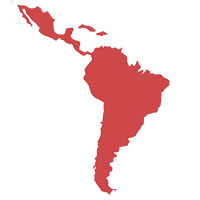Minding the Gaps
Cleo Verkuijl | December 10, 2014.
Even if the world’s major economies make deep emissions cuts climate change will likely cost developing countries US$150 billion a year by 2030 and as much as $500 billion by 2050, according a new UN report released on Friday.
This is up to three times more than previously estimated.
Current financing is not nearly sufficient to realise adaptation to the increase in droughts, floods and heat waves that are anticipated as a result of global warming, the Adaptation Gap report reveals. Adaptation funding by public sources reached around $25 billion in 2013, and, even with those figures, it is unclear how much is actually new and additional money. The private sector also contributes to adaptation but these amounts are not systematically tracked.
The UN report points to the need to accelerate and scale up the spread of adaptation technologies and demonstrates that existing knowledge on climate change and adaptation can be used more effectively. Its findings underline the need for including comprehensive adaptation plans in the new climate agreement set to be concluded in Paris next year. It will also feed into ongoing negotiations on compensation for climate loss and damage.
Adaptation costs will soar even higher if the world does not manage to limit global temperature rise to 2°C compared to pre-industrial levels.
Released last month, the UN Environment Programme’s Emissions Gap Report 2014 found that carbon neutrality must be achieved by 2070 at the latest in order to avoid this scenario. We will also have to compensate for overshooting our carbon budget by achieving net negative emissions by the end of this century.
Though emissions must soon peak to stay within the 2°C limit, the report warns the aggregate of current pledges from governments will not reduce global emissions enough.
The gap between what is needed and what countries are pledging is between eight and 10 gigatonnes of CO2 equivalent until 2020. If current pledges are extrapolated to 2030, this gap widens to about 15 gigatonnes. That’s roughly the annual emissions of China and the United States combined. No one is claiming that making the necessary cuts will be easy, but delaying action will only make it worse.













comment